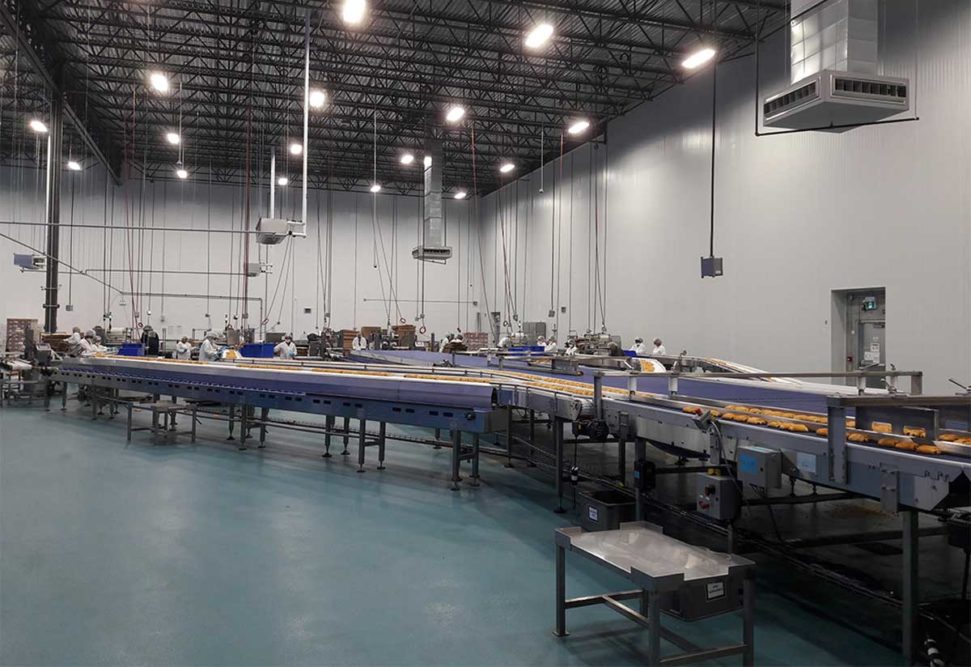Artisan breads have commanded a higher price than conventional commercial ones because they incorporate more premium ingredients, and the often long-fermentation processes make them more expensive to produce.
As a result, it’s imperative that artisan bakers do almost everything possible to garner efficiencies without compromising on taste, flavor or texture.
Glimek’s SD180 and SD 300 suction dividers have the possibility to limit the amount of dough brought into the chambers and create less stress in the process, noted Ingemar Erlandsson, Sveba Dahlen, a Middleby Bakery company. Moreover, its SD-600 divider comes with air cylinders and pistons that regulate the pressure on the dough. In addition to less stress during dough handling, he added, the dividers provide enhanced weight accuracy.
Cesar Zelaya, Handtmann bakery technology manager, pointed out that Handtmann’s dividing and depositing technologies actively address the issue of maximizing costly ingredient value from two perspectives.
“They protect ingredient investment value by maintaining inclusion integrity and product quality with a short product path and reduced friction, and they also optimize product value with incredibly precise and consistent scaling,” he observed.
He added that Handtmann dividers operate with +/-1% scaling accuracy that reduces giveaway, even in situations where dough consistency may vary from batch-to-batch due to changes in the process, such as time and temperature.
When mentioning artisan breads, the first images that come to consumers’ minds are the open-cell structure loaves of ciabatta that initially became popular about 20 years ago. John Giacoio, vice president of sales, Rheon USA, said bakers are now looking to automate formed breads like boules and baguettes but not sacrifice the handmade look and quality.
He said this prompted Rheon to develop rounding systems that gently form dough pieces to create boules and baguettes with the proper texture and appearance.
Joerg Sonnabend, manager of marketing communications, Rondo, pointed out the Rondobot imitates the manual rounding process for artisan breads.
By adding special accessories and tools, the robotic system can mimic the rounding process so that it is tailored to the dough and the end product; manual rounding is copied with 100% repeatability.
Rademaker’s Boule Rounder Unit specializes in automatic rounding of the classic French bread and other products.
“This modular component is on wheels that allow it to be moved in and out of the makeup line,” said Nick Magistrelli, vice president of sales, Rademaker USA. “Specifically engineered cups mould the discreet dough pieces into a rounded shape via a traveling motion timed with the under-running belt.”
To remove unsightly dough seams on artisan breads, the Gemini/W&P “BM” series of moulders offer automatic pressure-release rollers.
Jerry Murphy, vice president, sales and marketing, Gemini Bakery Equipment/KB Systems, also noted the company’s TWS-RF-TPA divider now handles softer artisan doughs more gently along with more efficient flour usage, optional oiling systems and adjustable positioning of the pocket drum that improves moulding and transfer to the production line’s spreader belts.
[Related reading: Software gently controls artisan production with precision]
For multi-shaped specialty baked breads and rolls, Fritsch offers its product decoration unit (PDU) based on the robotic technology of its croissant bending system.
Randy Kelly, applications specialists for Fritsch, a Multivac company, said the PDU can be used with the company’s IMPRESSA bread line to cut or press patterns onto the surface of round- and long-moulded items.
“A camera system monitors the position of the products to ensure the pattern is applied exactly in the center,” Mr. Kelly said. “Be it Kaiser rolls, rye breakfast rolls or products with individual decorations such as anniversary or football themes, there are no limits to creativity here.”
Many authentic artisan breads require a long resting period to relax dough pieces between rounding and moulding. To accommodate this critical part of the process, Glimek developed a modular intermediate pocket proofer with up to 60 minutes rest time.
“To be able to keep the dough for such a long time inside the intermediate pocket proofers, we also have designed a special coating system where you are able to coat the complete dough ball with semolina or another type of flour,” Mr. Erlandsson said. “After this long resting time, you have a very relaxed dough piece for the final execution in moulders or in sheeters.”
Prior to baking, another labor-intensive area involves scoring the dough pieces to provide a decorative design and prevent undesirable cracking and bursting of the crust during the initial stages of the baking process. Traditionally, bakers used razors or ultra-sharp knives for scoring.
Cyril Munsch, global sales director, Mecatherm, said such tools work well with larger loaves, but mechanical scoring may drag along smaller rolls without cutting them. That’s why Mecatherm now relies on a water-cutter for scoring, especially for high-moisture products.
“With a water cutter, there isn’t anything that’s contacting the dough pieces and causing a dragging effect, and when working with higher hydrated doughs, bakers are able to avoid potential sticking to the knife,” he said.
Heading into the future, the automation of artisan products remains a continuous improvement process.
However, with the recent advancements shown in the new generation of systems, the science of baking is allowing craft bakers to create higher volumes of quality baked goods to meet the demands from a broader array of consumers.
This article is an excerpt from the March 2021 issue of Baking & Snack. To read the entire feature on artisan bread, click here.





